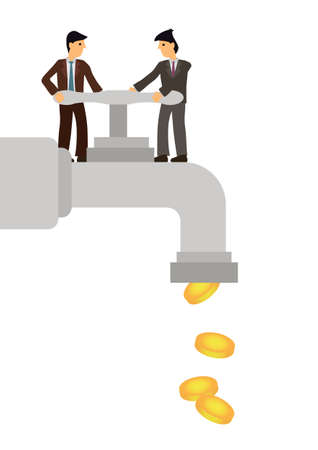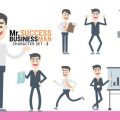1. Understanding the Content Funnel Framework
Before you can start turning visitors into qualified leads, it’s essential to grasp what a content funnel is and why it matters for your business in the U.S. market. A content funnel is a strategic path that guides potential customers from first discovering your brand all the way to taking action—like signing up for your email list or booking a call. Think of it as a journey where each step gives your audience just what they need to move forward, making it easier for you to connect with the right people.
How the Content Funnel Aligns with the Buyer’s Journey
The buyer’s journey in the U.S. typically follows three main stages: Awareness, Consideration, and Decision. Each stage needs its own type of content to help visitors feel understood and supported. Here’s how these stages line up:
| Funnel Stage | Buyer’s Journey | Content Examples |
|---|---|---|
| Top of Funnel (TOFU) | Awareness | Blog posts, social media, infographics |
| Middle of Funnel (MOFU) | Consideration | Ebooks, webinars, comparison guides |
| Bottom of Funnel (BOFU) | Decision | Demos, free trials, case studies |
Why It’s Crucial for Converting Visitors into Leads
The U.S. market is competitive—people have tons of options and short attention spans. A well-structured content funnel makes sure you’re not just attracting random clicks, but actually helping visitors become interested in what you offer. By giving them relevant information at every stage, you build trust and guide them naturally towards becoming qualified leads.
Key Takeaways
- A content funnel matches your content to where buyers are in their journey.
- This approach helps turn casual visitors into engaged leads.
- In the U.S., being clear and direct with value-driven content is especially important.
Understanding this framework sets you up for success as you move forward building your own content funnel tailored for American audiences.
2. Mapping Content to Each Funnel Stage
To build a successful content funnel that converts visitors into qualified leads, it’s important to create and tailor content for each stage of the buyer’s journey: awareness, consideration, and decision. By understanding what your audience needs at every step, you can make sure your message hits home with American audiences.
Understanding the Funnel Stages
Let’s break down each stage and see what kind of content works best:
| Funnel Stage | Goal | Content Types | Best Practices |
|---|---|---|---|
| Awareness | Get noticed by new visitors and educate them about their problem or need. | Blog posts, social media updates, infographics, videos, podcasts | Keep it simple and relatable; use storytelling and examples relevant to American culture. |
| Consideration | Help prospects explore solutions and show why your approach stands out. | Ebooks, webinars, comparison guides, case studies, email newsletters | Highlight benefits, share testimonials from U.S. customers, use clear calls-to-action (CTAs). |
| Decision | Convince leads that your product or service is the right choice. | Demos, free trials, detailed pricing pages, customer reviews, FAQ sections | Focus on value, offer guarantees or risk-free trials; address common American concerns like support and reliability. |
Creating Content That Resonates with Americans
When tailoring your content for U.S. audiences, keep these tips in mind:
- Use conversational language: Write the way people talk in everyday life—straightforward and friendly.
- Add real-life examples: Share success stories or scenarios Americans can relate to—think local brands or common workplace challenges.
- Cultural relevance: Reference popular trends or events when appropriate to keep your content fresh and engaging.
- Solve real problems: Address pain points specific to the U.S. market, like time-saving tools or customer service expectations.
- Clear next steps: Always include an easy-to-find CTA so visitors know how to move forward in their journey.
Sample Content Ideas by Stage
| Stage | Sample Topic | Description |
|---|---|---|
| Awareness | “5 Signs Your Business Needs Better Online Marketing” | A blog post introducing common marketing challenges faced by small businesses in the U.S. |
| Consideration | “How Our Platform Compares: A Side-by-Side Guide” | A downloadable PDF comparing your solution with competitors popular in America. |
| Decision | “See What Our Customers Are Saying” | A video testimonial reel featuring satisfied U.S.-based clients sharing their experiences. |
Key Takeaway:
Create specific content for each stage of the funnel using formats and language that connect with your American audience. This approach will help you guide prospects smoothly from first discovery all the way to becoming loyal customers.

3. Driving Traffic to Your Funnel
To turn visitors into qualified leads, you need the right people coming to your content funnel. In the U.S., some of the most effective ways to attract these visitors are through SEO, paid ads, and social media marketing. Let’s break down each strategy and see how you can use them for your funnel.
SEO: Getting Found Organically
Search Engine Optimization (SEO) is all about making sure your website shows up when people in the U.S. search for solutions like yours on Google. Focus on keywords that are popular locally, optimize your content for those terms, and make sure your site loads quickly and works well on mobile devices. Local SEO (like claiming your Google Business Profile) is especially useful if you’re targeting a specific region or city.
SEO Quick Tips
| Action | Description | U.S.-Specific Tip |
|---|---|---|
| Keyword Research | Find out what your audience is searching for | Use tools like Google Keyword Planner with U.S. filters |
| On-Page Optimization | Add keywords to titles, headers, and meta descriptions | Include American spelling and local slang if relevant |
| Local Listings | Create or claim local business profiles | Add your business to Yelp and Google Maps |
PPC & Paid Ads: Quick Wins With Targeted Reach
PPC (Pay-Per-Click) advertising lets you put your funnel in front of the right eyes—fast. Platforms like Google Ads and Facebook Ads Manager let you target users by location, interests, behaviors, and more. This means you can focus on U.S. audiences who are most likely to become leads.
PPC Best Practices for the U.S.
- Geo-targeting: Show ads only in states or cities where you do business.
- Cultural Relevance: Use visuals and language that resonate with Americans—think about holidays, sports, or trends.
- A/B Testing: Try different headlines or images to see what gets more clicks from U.S. users.
Social Media: Meet Your Audience Where They Hang Out
Americans spend hours each day on social platforms like Facebook, Instagram, LinkedIn, and X (formerly Twitter). Share valuable content that leads back to your funnel—think educational posts, quick tips, short videos, or even memes that fit your brand voice. Don’t forget to engage by replying to comments and messages!
Popular U.S. Social Platforms & Content Ideas
| Platform | Main Audience | Content Ideas |
|---|---|---|
| Facebook/Instagram | B2C & B2B (wide age range) | Tutorial videos, infographics, polls/questions, behind-the-scenes posts |
| B2B professionals | Industry insights, case studies, professional tips, event promotions | |
| X (Twitter) | Younger adults & professionals | Quick updates, news links, trending hashtags, customer service replies |
| TikTok/Reels/Shorts | Younger audiences (Gen Z/Millennials) | Short how-to clips, challenges, fun facts about your product/service |
Your Next Step: Mix and Match Strategies!
The best approach is often a mix: Use SEO for long-term growth, paid ads for immediate results, and social media to keep your brand top-of-mind. Keep track of which channels drive the most qualified leads so you can double down on what works best for your U.S.-based audience.
4. Nurturing Leads with Personalization
Why Personalization Matters in Your Content Funnel
Personalization is the secret sauce for turning curious visitors into loyal, qualified leads. By making your prospects feel seen and understood, you can build trust and keep them moving forward in your funnel. In the U.S., people expect brands to speak directly to their needs, preferences, and pain points. Here’s how you can use email marketing, retargeting, and lead magnets—all with an authentic American touch—to nurture those leads.
Email Marketing: Speak Directly to Your Audience
Email marketing is more than sending out newsletters. It’s about starting real conversations and delivering value at every step. Use the data you’ve collected—like what pages they visited or what freebie they downloaded—to segment your list and send content that actually matters to them.
Email Personalization Tactics
| Tactic | How It Works | American-Style Example |
|---|---|---|
| First Name Personalization | Adds the subscribers name to emails for a friendly touch | “Hey Sarah, check out these new resources just for you!” |
| Behavior-Based Triggers | Sends emails based on actions (e.g., downloads, page visits) | “We saw you grabbed our eBook! Here’s a quick guide to get started.” |
| Segmented Content Offers | Sends targeted offers based on interests or industry | “Since you’re in marketing, these tips are tailored for your team.” |
Retargeting: Stay Top-of-Mind Without Being Pushy
Retargeting lets you follow up with visitors who didn’t convert right away—think of it as a gentle nudge rather than a hard sell. In the U.S., straightforward and helpful reminders work best. Use retargeting ads on platforms like Facebook and Google to show relevant content based on what your prospect viewed earlier.
Tips for Authentic Retargeting Ads
- Keep your messaging friendly and casual—avoid pressure tactics.
- Highlight value or solutions (“Missed our free checklist? Grab it now!”).
- Rotate ad creatives so you don’t come across as spammy.
Lead Magnets: Offer Value That Builds Trust
A great lead magnet solves a real problem or answers a big question for your audience. American audiences respond well to practical, actionable freebies—think checklists, templates, quick-start guides, or webinars packed with useful tips.
Lead Magnet Ideas by Funnel Stage
| Funnel Stage | Lead Magnet Type | What Works Best in the U.S. |
|---|---|---|
| Top of Funnel (Awareness) | Checklist or Cheat Sheet | “10 Steps to Boost Your Website Traffic” |
| Middle of Funnel (Consideration) | Ebook or Case Study | “How Our Clients Increased Leads by 50%—Real Stories Inside” |
| Bottom of Funnel (Decision) | Free Consultation or Demo | “Book a Free 15-Minute Strategy Call” |
Pro Tip: Follow Up Like a Friend, Not a Robot
The most effective nurturing feels personal and genuine. Write your emails and ad copy like you’re talking to a friend—use everyday language, ask questions, and invite responses. People in the U.S. appreciate honesty, humor, and straight talk—so let your brand’s personality shine through every message.
5. Measuring Success and Optimizing the Funnel
Why Measuring Matters
If you want your content funnel to actually turn visitors into qualified leads, you have to keep an eye on the numbers. Tracking your performance helps you see what’s working, what needs fixing, and where you’re losing potential customers. It’s like checking your GPS during a road trip—you can’t get where you want to go if you don’t know where you are.
Key Metrics to Track
Here are some of the most important metrics for content funnels, especially for U.S.-based businesses:
| Metric | What It Tells You | U.S.-Relevant Tools |
|---|---|---|
| Traffic Sources | Where visitors are coming from (Google, Facebook, LinkedIn, etc.) | Google Analytics, Facebook Insights, LinkedIn Analytics |
| Bounce Rate | The % of visitors who leave after viewing just one page—shows if your content hooks people or not | Google Analytics, Hotjar |
| Time on Page | How long people stick around; longer is usually better for engagement | Google Analytics, Crazy Egg |
| Email Opt-In Rate | % of visitors who sign up for your emails—key for building your lead list | Mailchimp, HubSpot, ConvertKit |
| Lead Qualification Rate | % of leads that match your ideal customer profile (ICP) | HubSpot, Salesforce, Marketo |
| Conversion Rate | % of visitors who become qualified leads or customers at each stage of the funnel | Google Analytics Goals, HubSpot, Unbounce |
| Cost per Lead (CPL) | The average amount you spend to acquire each qualified lead—vital for ROI tracking in the U.S. market | Facebook Ads Manager, Google Ads, HubSpot Reports |
Top Tools for U.S. Marketers
- Google Analytics: The gold standard for tracking website traffic and user behavior.
- HubSpot: Popular CRM with robust funnel analytics tailored to American sales teams.
- Mailchimp & ConvertKit: Easy email marketing platforms to track opt-ins and segment U.S. audiences.
- Hotjar & Crazy Egg: Visual tools to see how users interact with your site—great for spotting drop-off points.
- Salesforce: Widely used CRM in the States for tracking leads and customer journeys.
Tweaking Your Funnel With Data-Driven Insights
Your data is only useful if you act on it. Here’s how to optimize each stage of your content funnel based on what the numbers tell you:
| Funnel Stage | If This Metric Is Low… | Tweak To Try |
|---|---|---|
| AWARENESS (Top of Funnel) | Bounce Rate is high; Traffic Sources show low reach on key channels. | Create more engaging headlines or visuals; try new platforms popular in the U.S. like Reddit or TikTok. |
| INTEREST/CONSIDERATION (Middle of Funnel) | Email Opt-In Rate is low; Time on Page is short. | Add clearer calls-to-action; use pop-ups or lead magnets relevant to American audiences (e.g., checklists, webinars). |
| ACTION/CONVERSION (Bottom of Funnel) | Lead Qualification Rate is low; Conversion Rate lags behind industry averages. | Narrow targeting criteria; personalize follow-up emails using U.S.-style testimonials or case studies. |
| COST-EFFECTIVENESS (All Stages) | CPL is too high compared to customer value. | A/B test ad creatives; focus spend on best-performing channels (often Google and Facebook in the States). |
Quick Tip: Set Up Regular Reviews
Create a simple dashboard (using Google Data Studio or HubSpot) so you can review these metrics every week. In the fast-paced U.S. market, quick adjustments can make a big difference in how many qualified leads you generate from your funnel.


